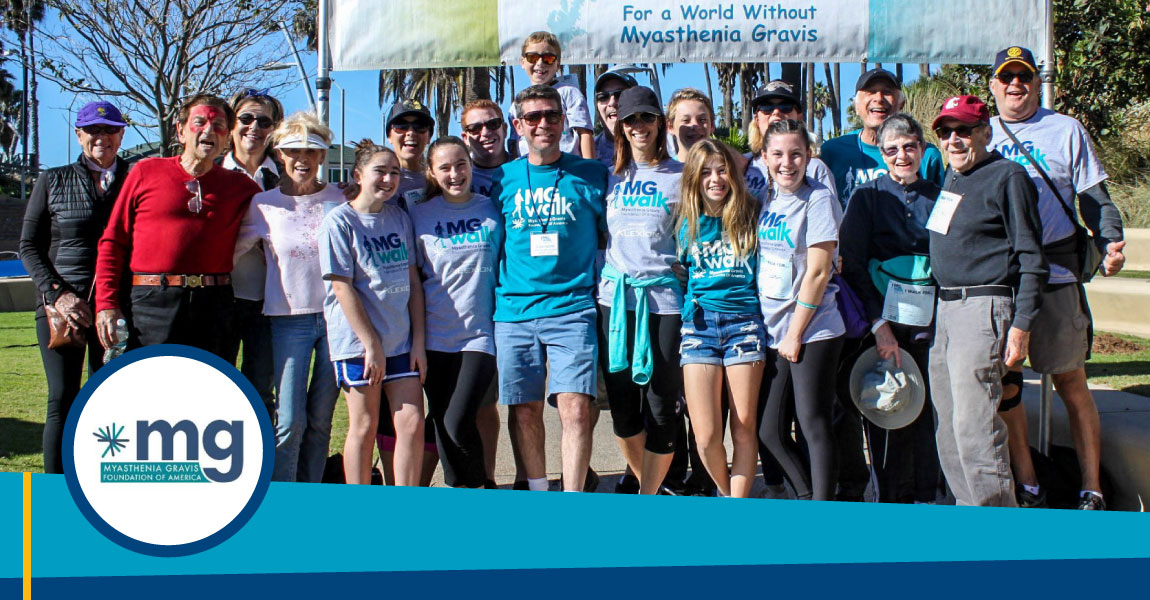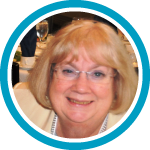Myasthenia Gravis Foundation of America (MGFA) is a nonprofit organization that is striving towards “A World Without Myasthenia Gravis,” and whose mission is to: Create Connections, Enhance Lives, Cure MG.
Mission Delivery Strategies include:
-
Create a robust resource network to improve access and enhance lives for those with MG.
-
Build a nationwide support network for those affected by MG.
-
Spearhead and support promising research on MG.
-
Improve time to diagnosis and care for MG through professional education, diagnostic tools, and outreach.
-
Raise awareness about MG through advocacy, communications, and education.
Myasthenia gravis (MG) is a rare, neuromuscular disease that usually has an autoimmune origin—though there are some congenital myasthenic syndromes. In autoimmune MG, the body begins to make antibodies that interfere with the communication between nerves and muscles. It leads to muscle weakness and the inability to make the muscles work properly.
Featured Guest:
Nancy Law,
CEO
Myasthenia Gravis Foundation of America
Approach to Collaboration
For MGFA, it is imperative to work with others in collaboration. Most staff functions for MGFA are provided through contractual relationships, though this is changing. They work with an association management company that provides them with operational support for the operation. MGFA also contracts with an event company to organize their fundraiser walks and with a financial company to run their finances.
In Nancy’s opinion, this model is working very well. MGFA’s entire organizational model is based on working with others.
MGFA engages in corporate collaborations, collaborations with local myasthenia gravis organizations, and with social networking groups, among others. The partnerships with social networking, like Facebook groups, have been very successful because they assist in recruiting volunteers, conducting surveys, and engaging people for clinical trials, among other purposes.
MGFA has collaborated with Global Genes on issues related to LEMS (Lambert-Eaton myasthenic syndrome). They are also members of NORD (National Organization for Rare Disorders), have a partnership with Research America, are a part of the National Health Council, and have collaborations with academic institutions. The Partners in MG Care Program enhances collaboration with clinical health care providers.
For example, MGFA collaborated with a university to develop an application, helping them to get the information necessary for the project. Additionally, having an extensive patient registry allows MGFA to share it with other organizations for clinical trials. To advance towards effective treatments of the disease, promoting clinical trials opens up a significant opportunity for collaborations.
In the corporate field, MGFA has vibrant collaborations with several pharmaceutical companies, especially on activities related to raising awareness. Activities include conducting interviews, facilitating focus groups, and other initiatives around myasthenia gravis. MGFA has been proactive in helping companies to recruit for clinical trials.
As a piece of advice for the sector, Nancy recommends to always look for opportunities for collaboration, noting how important it is to realize that everyone involved is trying to achieve positive goals. Thinking the best and being respectful of partners is vital to the relationship. But it is also essential to pay attention to possibly negative factors while collaborating— to protect your nonprofit from unethical business practices. It’s important to choose partners carefully—especially around financial practices and transparency.
Application of the 9 Considerations for Collaboration
Build Trust
This can be a substantial barrier that MFGA has found it hard to get over with some potential partners. Most of the local myasthenia gravis organizations are MGFA’s former chapters. A few years ago, they approached re-building trust with these local organizations by talking with them about the importance of helping the myasthenia gravis patients. Nowadays, they have MG walks with the participation of some of these groups and also invite them to the MGFA national conference.
MFGA’s major hurdle with building trust is around donors and money because some organizations may see others as competitors for the donors’ dollars. However, beyond these difficulties, their collaboration with these local groups has been moving forward, leading to invitations for Nancy to attend conferences and other activities.
The key to moving forward is being transparent and having frank and open conversations and demonstrating respect for their efforts. Three former MGFA chapters who had left the organization have now decided to “join the new MGFA.” This is different from “rejoining” as the organization is not the same and offers new opportunities.
Have a Vision
It is vital to have a vision on what MGFA wants to accomplish, as well as the expectation of partners to provide an accurate evaluation of how the partnerships are working.
Seek to Assure the Success of Your Collaborators
The success of local myasthenia gravis organizations is also a success to MGFA because the main objective is to help the people that suffer from this disease. The same applies to other kinds of partners with whom MGFA works with: their success is an advancement for the people they serve. This mindset is their approach, and they are fully committed to helping their collaborators become successful.
Take stock
There are some things that MGFA can do centrally in assisting local organizations. For example, MGFA can give pamphlets free of charge to local groups, which is very convenient and allows them to dedicate more time to their local programming. MGFA can also publicize the local organizations so that more people can find them. It’s the little contributions that count and lead to greater growth.
Start Small
MGFA checks with people along the path of collaboration to see if they are making progress or experiencing setbacks. For this purpose, it is important to be clear on the goals both groups want to achieve with the collaboration. If they are not ready, it’s OK. The door is always open.
Take a Portfolio Approach
As mentioned above, MGFA has several collaborations in different areas and with various partners. This strategy provides them with a set of projects that have the potential to add new value.
Collaboration has led to an unprecedented investment for the MG Community—a $7.8 million grant awarded by the NIH funded Rare Disease Clinical Research Network to establish the MGNet—a network for MG research led by Drs. Henry Kaminski and Linda Kusner at George Washington University and engaging scientists from other academic institutions, as well as patient advocacy organizations MGFA, MDA and Illinois based Conquer MG, and pharmaceutical companies. MGFA and Conquer MG each made commitments of $250,000 that were instrumental in myasthenia gravis being one of 25 rare diseases approved in 2019 for this highly competitive five year grant.
Consider Non-traditional Partners
A non-traditional partnership has been MGFA’s work with Global Genes around LEMS (Lambert-Eaton myasthenic syndrome), which is a muscle weakness but not precisely the same as myasthenia gravis.
Keep Your Donors Apprised of Your Collaborations
The important message for donors is that what is good for people living with MG is more important than any organization. MG is a rare disease, and we need to be glad when people make donations that help the MG Community. When we see local organization providing helpful services, we hope their fundraising is successful and will even promote their events, knowing that their work allows us to focus on other bringing other communities together through new support groups and MG Walks. We ask that they try to feel the same way—being supportive of MGFA’s fundraising.
Future Collaborations
For future collaborations, MGFA and the Muscular Dystrophy Association have begun to have conversations—and MGFA is pleased to be invited to participate as an exhibitor at their Clinical and Scientific Symposium. MGFA aspires to work more closely with the MDA, especially around advocacy and educational programs for patients to ensure our efforts complement each other’s work—and of course as partners in MGNet.


